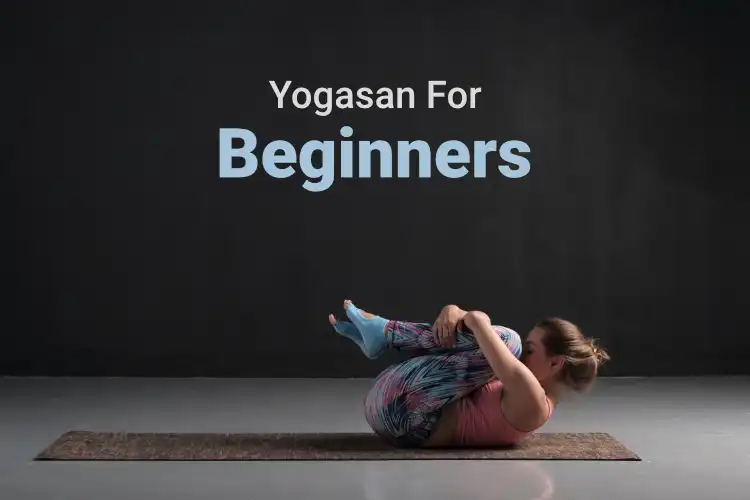Simple Yoga for Beginners

Starting something is important because it set the tone for the rest of the game. In the world of yoga, this is particularly true. Humans use conceptual landmarks to track time, according to research. We use indicators to direct our lives, just like we would use a physical marker to assess our physical location (for example, the pizza place is round the block from my house).
These temporal landmarks are distinct from other (often dull) days because they are special to us. Any of these dates are well-known in cultures, such as New Year’s Day or August 15th. Some are more personal, like your birthday, the beginning of a new job, or an anniversary.
Temporal landmarks can help us start something new or give us the strength and trust to restart something familiar from a different angle.
Table of Content
What is Yoga?
Yoga is a broad category of spiritual methods and activities aimed at uniting the mind, body, and soul in order to attain enlightenment with the universe. In the West, what is often referred to as “yoga” is actually Hatha Yoga, one of the many types of yoga. The various yoga paths emphasise various approaches and strategies, but all contribute to the same end of unity and enlightenment.
Hatha Yoga aims to bring the mind, body, and soul together through the use of asanas (yoga postures), pranayama (yoga breathing), mudra (body gestures), and shatkarma (self-discipline) (internal cleansing). These physical exercises aim to cleanse the body and cultivate prana (life-force energy). Many of these ancient techniques are not emphasised in modern Hatha Yoga, which also focuses on the physical yoga poses.
The yoga asanas themselves are a wonderful type of mental and physical exercise, regardless of what your goals or objectives are for starting.
How Much Yoga Should a Beginner Do?
Yoga is incredible; even if you just practise for one hour a week, you will reap the benefits. You would undoubtedly receive more rewards if you can do more than that. It is recommended to begin with two or three sessions a week, each lasting an hour or an hour and a half. It’s perfect if you can only commit to 20 minutes per session. Don’t let time constraints or impossible expectations get in the way of your success; do what you can and don’t stress about the rest. After a while, the urge to practise will most likely grow naturally, and you will find yourself doing so much more.
Flexibility, range of motion, stamina, equilibrium, inner peace, and holistic well-being will all increase significantly. It is still advantageous to practise yoga less than this level, but you can see smaller changes over a longer period of time. As in other stuff, the more effort you put into it, the more benefits you’ll reap.
What Is the Best Yoga for Beginners?
If you’re out of shape or inflexible, we suggest starting with a simple practice before you’ve gained the strength and endurance to tackle more difficult asanas. If you’re reasonably fit and versatile, you should be able to join a daily hatha yoga class right away. You should try a vinyasa or flow class once you’ve mastered the basic postures. We advise you to hold off on doing Ashtanga or hot yoga until you’ve gained some physical strength and stamina. It’s best to understand the advantages and disadvantages of caution and protection and take yoga slowly and deliberately. The best way to find out if yoga is right for you is to just try it!
Can I Start Doing Yoga at Home?
A simple answer would be yes. Why waste even a minute when you can start right away at the ease and comfort of your home.
Practice Every Day at Home
Yoga helps you reach your full potential in all areas of your life be it physically, intellectually, emotionally, and intensely. It’s designed to be done every day at home (preferably in the morning) so that when you head out into the world for your everyday activities, you’ll be at your best in every way.
In the yogic tradition, it is recommended that you practise yoga for at least a mandala, every day. A mandala is a 40-day period during which the human system goes through one physiological cycle. You can firmly develop the yoga practice on all levels – body, mind, and energy – and reap the benefits by practising yoga at home for one mandala.
Mornings and Evenings
Yoga may cause the body to produce a lot of heat. If the temperature is high outside and your body heat rises above a certain amount, it can cause cellular damage. Therefore, it’s best to do your daily practice in the mornings or evenings when the weather is much cooler.
A Place to Practice
When doing yoga at home for beginners, it’s best to set aside some space. When you practise yoga in the same place every day, space takes on quality or energy that is conducive to your inner growth.
Light a Diya or an Oil Lamp
Oil lamps offer lighting and an enticing ambience, but they also build a positive energy environment in your home. Lighting a lamp before doing yoga at home will undoubtedly improve your experience.
3-ft Radius to do Free Movement
The human body, according to yoga, is a perfect reflection of the greater celestial cosmos. Yogasana practice is about aligning the system’s geometry with cosmic geometry. There must be enough room for the energies to travel while such a powerful mechanism is underway. It’s best to keep a 3-foot-radius zone around you where nothing moves.
Throw Away All the Distractions
When you practise yoga, you’re attempting to direct your focus inwards towards the centre of all creation that resides within you. When you try to do yoga at home, music or some other sound that draws your focus elsewhere is a distraction. It’s also a good idea to switch off or put your phone on silent mode. You need to set aside some time for yourself!
How Should a Beginner Start Yoga?
Yoga poses are the foundations of yoga. As you develop a regular yoga practice, these are good to learn. To begin practising yoga, all you need is your body, your mind, and a little bit of curiosity. A pair of yoga leggings or shorts, as well as a t-shirt that isn’t too baggy, are also useful. Since you will be barefoot, no special footwear is needed. It’s a good idea to carry a towel to class or even if you are practising at home. You may want to purchase your own yoga mat as your practice progresses, but most studios will have mats and other props available.
To Roll it Up
So what are you waiting for? You all can benefit from yoga. It’s time to get out of your yoga mat and discover the unique mix of physical and mental exercises that have enthralled yoga practitioners all over the world for thousands of years. Yoga’s strength is that you don’t have to be a yogi or yogini to profit from it. Yoga has the ability to relax the mind and strengthen the body, whether you are young or old, overweight or fit. Don’t be put off by yoga terms, pricey yoga studios, or difficult poses.







